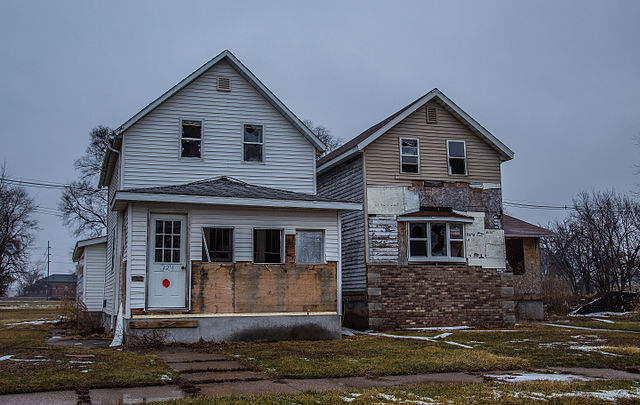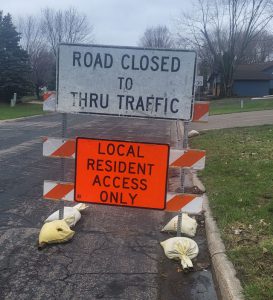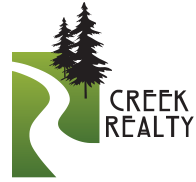We’ve all probably noticed something in our neighborhood that we’d like changed. Maybe it’s an unsafe intersection or a home that’s always a problem. It can seem daunting to address, and local government can feel impenetrable, but it’s actually a lot easier to get things done than you might think. Before helping people buy their own homes, I worked in neighborhood revitalization and community organizing. We started with the belief that kids who grew up in a safe and nurturing neighborhood performed better in school. We helped residents create community and take ownership in their neighborhood to address community issues, so I am familiar with the process of getting things done. A recent issue in my own neighborhood brought this to mind as something you might find helpful.
First, a word – this process should always begin with respect and the understanding that others involved are human beings too. If your position marginalizes, or is to the detriment of others in your community, then your approach is best reconsidered. With that out of the way, let’s address some community concerns! What follows is a step-by-step guide of how to tackle these problems. They may be an issue related to city infrastructure such as roads, parks, or lighting, or they may relate to an individual such as a neighbor or a landlord. My hope is you can develop a plan to deal with these issues by following along.
Identify the Problem
- Who or what is the concern with? – Identify what exactly you are dealing with before you can correct it. Now is the time to consider if the issue is an emergency. If someone is in imminent danger, then it’s likely an issue for first responders in the form of law enforcement, medical help, etc. If your concern is with a neighbor, it’s often best to attempt to deal with them personally first. If you cannot achieve a solution together and the issue persists, that is the time to ask for the help of others. No neighbor has ever endeared themselves to others by not addressing this type of issue head on.
- What is the nature of the problem? – After you know who or what your concern is, what is causing the concern? It’s important at this stage to be objective; what can you see, hear or readily observe? Be objective – the best solutions come from things that can be measured. Are there repeated accidents at a nearby intersection? Is a nearby rental in poor repair? Take time to think through what the real issue might be and record your observations.
- Determine if any legal statutes are relevant – Do research on city, county, and potentially state regulations and statutes. Knowing this can help create a strong case for what you would like to see changed and avoid anything that will not lead to results. At this point, resources like the internet and library are good starts, though it can be great to reach out to a representative at city government to ask questions and better understand the situation and the people who are or will be involved.
- Determine who to contact – If your research up to this point did not include contacting people or city departments, look into who handles what area. You’ll get a lot more traction if you can find out what your city code says about the problem and who is responsible for managing / resolving. A typical example is that issues of building code are often handled by an inspections department and trees are handled by Parks and Recreation. Most cities have an online directory of departments and relevant emails or phone numbers to reach out to generally. If your city has a resident issue reporting form (as many do) you can even start there if you anticipate a quick resolution.

A home across the street from you that looks run down like this can create a whole host of other issues in your neighborhood.Tony Webster from San Francisco, California, CC BY-SA 2.0, via Wikimedia Commons
Make a Request
Once you have done your homework, you can make a request to the appropriate people or via a contact form as referenced above. Forms have a clear format to follow, but if you are doing so via email (as many will want to do to establish a record of the process) you should work to make a request that is easy to follow with clear expectations. Below is a list of what should be included in your initial interactions:
- State your concern – what is the issue specifically?
- Identify the impacts – what issues are created by the problem or are potential issues
- Verify who is responsible for this issue – is it the person(s) you are corresponding with or someone else?
- Demonstrate and illustrate the issue with relevant information
- Pictures of areas of concern
- Data observed by you or others (make sure to note how, when, or where the data was collected)
- Include anecdotes or stories gathered from others
- Ask for a resolution – If you have ideas of how to correct an issue, ensure they are measurable or concrete. If you don’t have an idea of how to correct the issue, it is acceptable to ask for recommendations from local government.
- Inquire as to a timeline – This will depend on the issue you are dealing with, but work to agree with local representatives or employees on when this should be addressed and corrected. Keeping a timeline establishes expectations.
It is important to communicate effectively and to allow others to do their job at this stage. If you lay out your case well, it is reasonable to expect a response of solution or clarification of responsibilities but remember to be patient. I’ve found that many city employees have a regimented schedule so may not respond to emails at all times of the workday, but rather at a scheduled time of day. It may take 24-48 hours for a decisive response to your request.
The Squeaky Wheel
This phase requires skill and rewards people with strong interpersonal skills. You might get shuffled around or recommended to talk to other parties within or outside of an agency. It’s easy to become frustrated at this point but it doesn’t serve you to come off as angry or arrogant. Be kind, clarify and when given the opportunity you can re-state your hope for a resolution. One excellent tactic you can use is to work and be seen as a collaborator rather than an adversary. If an issue becomes contentious, you may still end up seen as an adversary by some, but the road is a lot less bumpy when everyone feels like they are working together.
Being the squeaky wheel is important, however, and making sure that your issue stays at the top of someone’s to-do list is in your best interest. Ask for regular updates and set a schedule for yourself to check in with key people. Whether it’s once a week or more often, reminding people that you haven’t forgotten helps the issue get resolved quicker. For example, consider the following situation:
In our neighborhood, the county began a road construction project that closed a county highway for 3 months. As a result, car traffic was spilling into residential neighborhoods to get around the project at a volume that was easily 10 times more than typical. Many cars drove fast through a neighborhood that was not designed for that type or volume of traffic. In an effort to slow this, many neighbors asked for the neighborhood entrances to be posted with signs to let people know this was for local traffic only and not a detour. Several neighbors contacted the city, county and anyone else who would listen asking for the solution of signage. After some initial communication and getting shuffled around, we got half the streets signed (but not all). Neighbors continued the pressure, calling, emailing, etc. until finally the signs were added to the remaining streets on a Saturday afternoon at 3 PM. Cities and counties do not work on weekends typically, but no one likes the pressure cooker of unhappy residents constantly bothering them so it got done. As a final step, the person putting up the signs strung hot pink flagging tape next to the signs to block people from going around the other side. It would be hard not to read that as someone instructing the installer “and make sure that no one can get around it so I can stop getting phone calls!”

One example of an issue that needs addressing by neighbors is local projects that disrupt normal traffic patterns.
In this case and others, there are some things you can do to be the squeaky wheel that can make the process work smoother and faster.
- Check your attitude – don’t be a bully
- Be polite and firm
- Ask for specific remedy
- Ask neighbors to also reach out – you get results quicker if the city/government knows its a concern shared by others.
- Don’t ease off pressure until you see action/results
- Ask for timelines – if action doesn’t happen, ask when you can expect a resolution
- Use all channels available – email, call, show up in person!
Play the Long Game
There’s a benefit that’s not often thought about when we face a problem in our community, and that is the opportunity to create personal relationships. If you take the time and act as a collaborator rather than an adversary, not only do you get problems solved more quickly in the long term, but also create relationships you can call on in the future to solve issues. Maybe the next thing you solve is not related to a road issue, but one of parks. Positive interactions with others may allow you introductions, or even someone to argue in your favor at a future date. You’ll find that many of the people that are government employees are also neighbors, and frequently, they want the same thing you do. City and county government employees are not in a position to advocate and must follow the direction of superiors or residents. You may find them eager to support what you are pushing – just don’t expect them to drive the bus!
Involve Others
Sometimes the process of getting things done is not as smooth as we’d like. If you’re the first to bring an issue to local government’s attention, you might be met with skepticism. This is why starting with good data is important, and it can also be helpful in recruiting others to your cause. It’s easy to ignore one voice, but the moment that government starts hearing from multiple individuals, the voice can grow into a roar that will require attention to quiet. As you are first looking into the issue and getting information, seek the opinions of others. You can include like minded people in communications with local representatives and even encourage people to share their unique perspectives. Key points to keep in mind:
- Have conversations with neighbors – through this you can build community and better understand issues from a point of view that may differ from yours.
- Include willing neighbors in communications with local government to ensure everyone is “on the same page.”
- Respect that not everyone can or wishes to participate – meet people where they are and don’t push others too hard.
- Set up an online group or information hub – modern technology allows us to communicate with each other on email threads, chat groups, etc.
- Celebrate successes – it’s easy to fall into looking at the problem all the time, but others will be motivated to know you’ve reached a goal (however small).
The bigger the issue, the more value there is in growing your group of voices. Not everyone is comfortable being the squeaky wheel so including people on their own terms can get you additional information, stories, and viewpoints to share with decision makers in a way that is comfortable for all. Consider a situation that will involve city meetings open to the public. It means a lot for people to speak, but it may be enough to simply have a good showing of neighbors at the meeting, even if only one person speaks.
Ensure Success
Whether the process is quick and easy, or long and protracted, it is important to take the time to get the process right. Good record-keeping is critical and great record-keeping can become compelling when making your case heard. Below are some rules that are hard and fast in my experience when addressing issues. These become more important when dealing with bigger and more challenging issues. Fatigue by those spearheading can be a real concern and having the ability to sub in a different lead person can make all the difference in maintaining pressure on the issue. To do this well, the goal should be to ensure that anyone can pick up where another leaves off. Even if the process is a short one, it is difficult to argue with detailed information that is maintained and thoroughly presented.
- A picture is worth a thousand words – Pictures and video are useful in presenting a case and setting the scene. Remember that local government employees typically work Monday through Friday, 9-5. Without you they cannot SEE what goes on at 8:30 on a Saturday evening. They aren’t at your bus stop in the pre-dawn winter with you, but you can paint a picture with relevant and quality visuals.
- Take detailed information – Every piece of data can and should be cataloged in a record. The bigger (and longer to resolve) an issue is, the bigger the document can be. Small issues can be done as a digital or paper note; as they get bigger, emails and spreadsheets become important. What is the measurement, when was it taken, who was there, what was the nature of the problem? Odds are you know someone who loves data or has a job that deals with data more effectively than you can.
- Coordinate talking points – determine what the key issues are and ensure that you share this with others. If people are saying the same thing as you are, it can be more memorable to decision makers.
- Maintain a timeline – This can be as simple as logging correspondence in email form, but should also include phone calls, personal visits and responses made by local government.
- Share in Success – The biggest cause of fatigue with complex issues is feeling like nothing is getting done. Acknowledge success (however small or big) and make sure to thank the people involved who helped.
Conclusion
When faced with a challenge, it’s easier to complain or despair than it is to do something, but making the effort to improve our communities is worthwhile and even a critical piece of keeping them great places to live. The process usually starts with one person, but when done right ends up with nearly everyone involved to some degree. By having discussions and working as a team with local government, it is possible to get things done in the short term AND in the long term. Quality conversations naturally lead to other areas of concern. When you aim to collaborate rather than square off against another you find that people become willing to invest time and energy into other projects with you.


